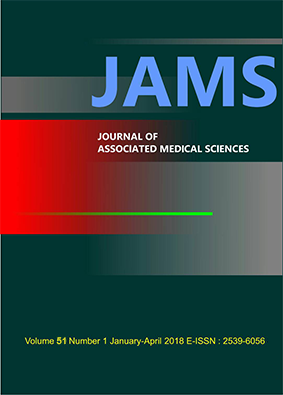Common statistical errors in logarithmic data of viral load
Main Article Content
Abstract
Background: The mathematical operation of logarithm data follows the rules of logarithm as the numbers relate to specific meanings. The numbers prior to the decimal are the mantissa or the transformed power of 10 and the numbers after the decimal are the significant numbers of a given numeric data. Such operations result in errors in statistical calculations and lead to erroneous conclusions and eventual miss-interpretation of data.
Objectives: The principal aims of this study were to demonstrate and discuss several commonly made mistakes in calculation of logarithm data of viral load assays, and the subsequent errors in calculation of precision that affects the estimation of measurement uncertainty of the test.
Materials and methods: The study reviewed scholarly articles in 2017, using’ viral load’ as a keyword. Several sets of log data from inter-laboratory comparison of human immunodeficiency virus (HIV) load and multi-center evaluation of cytomegalovirus (CMV) load assays were used for this study to demonstrate the errors in calculation when the statistical calculations were performed using logarithm data.
Results: It was observed that presentation of average viral load data as arithmetic mean and calculation of other statistical measures directly from log viral load data was quite common, in spite of that fact that such average was log geometric mean of the viral load. Standard deviations (SD) calculated directly from log viral loads gave a new-undefined values that were irrelevant to the deviation of viral load from its mean. Such errors in SD calculation lead to extraordinarily low coefficient of variance and very low measurement uncertainty.
Conclusion: The SD, calculated from the log, and those SD calculated from the viral load per milliliter are different. Mathematically, such statistics should be calculated from the number of viruses per milliliter and could then be converted to a log scale for downstream use. Traditionally, the SD were calculated from the log which was very low. This study recommends that for all statistical measures, the absolute value is important, should use the viral load per milliliter in the calculations and then convert it into a log scale for correct usage.
Article Details
Personal views expressed by the contributors in their articles are not necessarily those of the Journal of Associated Medical Sciences, Faculty of Associated Medical Sciences, Chiang Mai University.
References
Reference
Wikipedia, The Free Encyclopedia. John Napier [online].2014[accessed 16 October 2014]; available from en.wikipedia.org/wiki/John Napier.
http://www.rsc.org/membership/networking/interestgroups/analytical/amc/software/RobustStatistics.asp
4Boutilier R.G.,Randall D.J.,Shelton G., and Toews D.P.Acid-Base relationships in the blood of the toad, Bufo marinus.J.Exp.Biol. 1979,82:357-365. Available at http://jeb.biologists.org/content/jexbio/82/1/345.full.pdf
Suthon Vongsheree, Kittipoong Keardrit, Surasak Muenphon, Maliwan Homchan, Prompussorn Dissara . Failure in Calculating the Statistics from Logarithm Values: Case Study Bull.DMSC 2015,57(2):197-203.
Wolff D.J.,Heaney D.L.,Neuwald P.D.,Stellrecht K.AS., and Press R.D. Multi-Site PCR-Based CMV Viral Load Assessment-Assays Demonstrate Linearity and Precision, but Lack Numeric Standardization J Mol Diag 2009,11(2):87-92.
Bureau of Laboratory Quality Stanadards,BLQS DMSC,Policy and requirement on estimation of uncertainty measurement and traceability. N0715007 revision 03.available from http://dmsc2.dmsc.moph.go.th/webroot/qa/webblqs/userfiles/N%2007%2015%20007%20Rev.03.pdf


